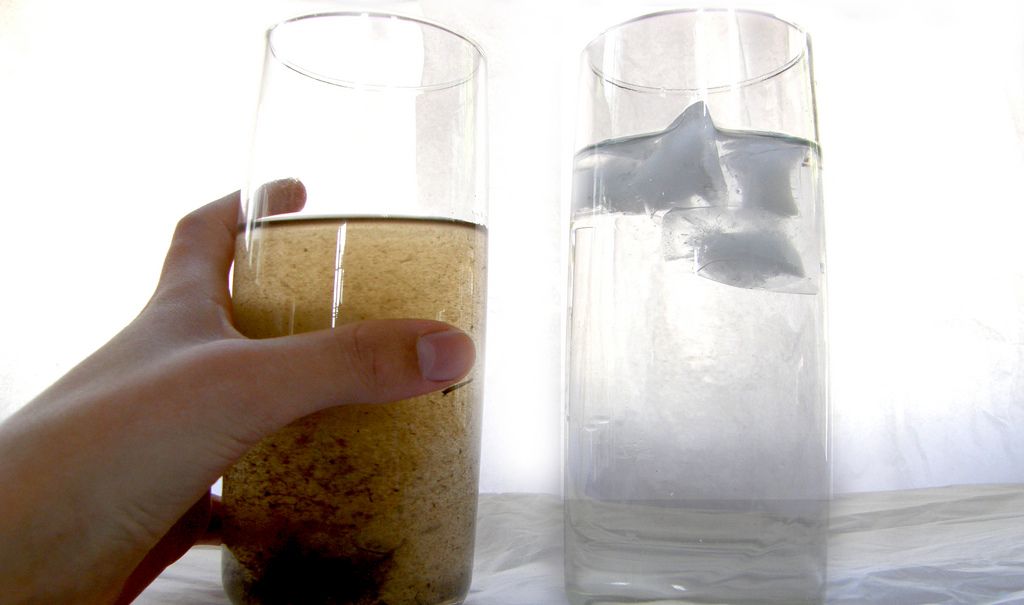This article is from a student at the NYC Lab School. The Lab School participated in a series of visits with Pulitzer Center journalists leading up the High School News Literacy Summit at Baruch College in Manhattan.
Imagine turning on your faucets and seeing discolored water pouring into your sink. Of course, that problem is unlikely to occur in New York City, but for many people around the world, their drinking water is not only unsanitary but also hazardous to their health. According to Water.org, 884 million people worldwide lack access to safe drinking water; that is approximately one is eight people. In addition, 3.575 million people die each year from water-related diseases. More people die from unclean water than any other causes in the world; without clean water, life is endangered.
New York City has one of the cleanest water systems. Our water supply comes from 19 reservoirs and 3 controlled lakes. The Catskill provides 90% of our water supply; the other 10% comes from the Croton watershed on the east side of the Hudson River.The watersheds have a "6,000 miles network of pipes, shafts and subterranean aqueducts" (underground bridge like conduit that carries water over valleys) that carries an average of 1.2 billion gallons of water. The infrastructure of the city water delivery system is considered as "American civilization's proudest engineering accomplishments." Although it may be considered as a great accomplishment the infrastructure of the watershed is starting to break down. Some of the infrastructures are "more than 100 years old." Earlier this month, a water main broke and flooded a midtown street.
The EPA has issued its Clean Water and Drinking Water Infrastructure Sustainability Policy to promote sustainable infrastructure within the water sector. This policy is issued because "communities across the U.S. are facing challenges with their water infrastructure", which are mostly due to aging systems in need of upgrade and repair. We tried contacting James Horne of the Office of Wastewater Management but he was unavailable. We left him a voicemail and asked him to call us back but we never got a reply. We also tried contacting Dan Murray of the Aging Water Infrastructure Research Program but were unable to get a reply either.
The economic cost for New York State infrastructure over the next 20 years is estimated to be around $36.2 million. Between 2007 and 2008, there was a $300,000 budget given to the Department of Environmental Conservation to test the infrastructure of wastewater. The cost of the filtration plant is $6-$10 billion and the maintenance and operation of the plant will cost $110 million annually. As one can see, maintaining New York's water infrastructure is extremely costly.
Our old infrastructure is also affecting water quality. Recently, lead was discovered in older buildings the water pipes built before 1987 since the pipes were made entirely of lead. In recent newspapers reports, lead concentrations in old buildings have risen up to 14 percent. The lead in the water has passed the "accepted benchmark." Even though health and environmental officials says that there are no health threats that will come from the rising lead level there are still problems. It is noted that "drinking water is rarely the primary cause of lead poisoning, but elevated lead levels in water can increase a person's total lead exposure." Dr. Rosen stated what the U.S. EPA (Environmental Protection Agency) said that, "there really is no level of lead that's safe for children." If one has too much lead it can led to many health problems like damages to the "brain, kidneys, nervous system and red blood cells." However, the problem can be fixed by running your tap water for about 30 seconds.
New York City's water infrastructure has been deteriorating over these past few decades. Rusty building pipes can cause the tap water that comes out to be brown. With the constant breakage of pipes the EPA and many other programs are starting to take action. In United States "240,000 water main breaks per year." New policies are being introduced to improve our water carrying systems. About nine percent of our tax money contributes to the maintenance and reconstruction of the water infrastructure.
